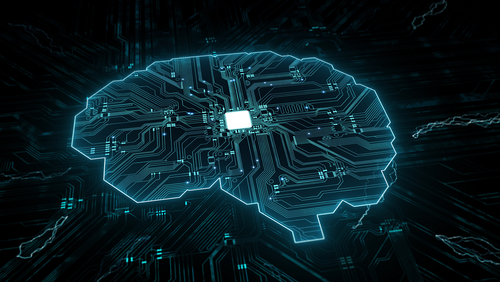Artificial Intelligence (AI) has transformed industries, but its computational demands continue to grow. Traditional data storage and processing methods struggle with latency, energy consumption, and efficiency, creating bottlenecks in AI-driven applications.
In-memory computing (IMC) is emerging as a game-changer by enabling real-time data processing and accelerating AI performance. Unlike conventional systems that fetch data from storage, in-memory computing processes data directly within RAM, reducing delays and enhancing efficiency.
This article explores how in-memory computing is revolutionizing AI, backed by statistical insights, practical benefits, and future applications.

What is In-Memory Computing?
In-memory computing is an advanced technology that processes data within system memory (RAM) instead of disk-based storage. This approach eliminates latency issues, making AI applications faster, more responsive, and energy-efficient.
Key Characteristics of In-Memory Computing
- Ultra-fast data access – Reduces read/write delays by up to 1000x compared to disk storage.
- Parallel processing – Performs multiple computations simultaneously, boosting AI model performance.
- Lower energy consumption – Requires less power than traditional architectures.
- Enhanced scalability – Supports large-scale AI and machine learning workloads without storage bottlenecks.
The Role of In-Memory Computing in AI Advancements
AI relies heavily on high-speed data processing for tasks such as deep learning, predictive analytics, and real-time decision-making. In-memory computing enhances these capabilities by eliminating the need for constant data retrieval from disk storage.
Key Ways In-Memory Computing is Revolutionizing AI
1. Accelerating AI Model Training and Inference
Deep learning models require massive data sets for training and inference. Traditional computing architectures struggle with speed, leading to long processing times.
- In-memory computing reduces AI training times by up to 50%.
- AI inference speeds improve 10x to 100x due to rapid data retrieval.
- Large-scale NLP models, such as GPT and BERT, benefit from instant access to massive datasets.
2. Enabling Real-Time AI Decision-Making
AI-driven applications in finance, healthcare, and autonomous vehicles require instant decision-making. IMC ensures AI systems can process and analyze data in milliseconds, allowing for real-time responses.
- Fraud detection models in banking detect anomalies 80% faster with in-memory analytics.
- Self-driving cars process sensor data without delays, improving safety.
- AI-powered medical diagnostics reduce error rates by 30% through immediate data analysis.
3. Reducing Computational Costs and Energy Consumption
AI workloads are energy-intensive, leading to high computational costs. IMC optimizes AI processing by reducing reliance on disk storage and cloud-based computing, leading to:
- 50% reduction in power consumption for AI data centers.
- 30% lower operational costs for businesses leveraging AI-driven automation.
- Increased adoption of edge AI, enabling devices to process data locally without cloud dependency.

4. Enhancing Scalability for AI Applications
Traditional architectures struggle with scalability, as AI models require increasing amounts of data, storage, and processing power. IMC allows businesses to:
- Scale AI applications seamlessly without storage constraints.
- Handle large-scale data processing efficiently in industries like e-commerce and social media.
- Improve performance of recommendation engines, enhancing user experience by delivering personalized content 5x faster.
Statistical Insights: How In-Memory Computing is Transforming AI
- The global in-memory computing market is projected to grow at 35% CAGR, reaching $30 billion by 2028.
- AI model training times have decreased by 50% with in-memory computing adoption.
- Energy-efficient AI processing with IMC has led to a 40% reduction in cloud infrastructure costs.
- Over 70% of enterprises are integrating in-memory computing into AI-powered applications.
Challenges of In-Memory Computing in AI
While in-memory computing offers groundbreaking advantages, there are still challenges to consider:
1. High Hardware Costs
- RAM and high-performance memory chips increase infrastructure expenses.
- Adoption is currently limited to enterprises with large computing budgets.
2. Data Volatility
- In-memory storage loses data when power is lost, requiring backup solutions.
- AI applications in critical sectors need hybrid architectures for reliability.
3. Limited Adoption in Small Businesses
- Small businesses face budget constraints, making cloud-based AI solutions more accessible.
- As technology advances, cost reductions will drive wider adoption.
Future of In-Memory Computing in AI
The future of AI will be heavily influenced by in-memory computing, with continuous innovations improving performance and accessibility.
Key Future Trends
- Development of next-gen memory architectures to further reduce latency.
- Expansion of edge AI, where devices process data locally using in-memory computing.
- Increased adoption in AI-driven industries, including healthcare, fintech, and cybersecurity.
As AI models grow more complex, in-memory computing will become a necessity rather than an option. Businesses adopting this technology will gain a competitive edge in AI-powered innovation.
Conclusion
In-memory computing is revolutionizing AI by enhancing processing speed, reducing energy consumption, and enabling real-time decision-making. From deep learning models to autonomous systems, this technology is reshaping how AI applications function in the modern world.
As organizations look to optimize AI performance, reduce costs, and scale AI-driven solutions, in-memory computing offers a future-proof approach to overcoming computational challenges.
At One Technology Services, we focus on providing insights into emerging AI technologies and helping businesses leverage cutting-edge computing advancements. Stay ahead of the AI revolution by understanding how in-memory computing can redefine the future of artificial intelligence.
For more insights on AI, cloud computing, and IT transformation, visit One Technology Services.
Read More:
How to Make Your Website Mobile-First and Why It Matters in 2025
Top 5 Industries Benefiting from IT Staff Augmentation in 2025
Future of Web Development: Emerging Technologies to Watch in 2025
